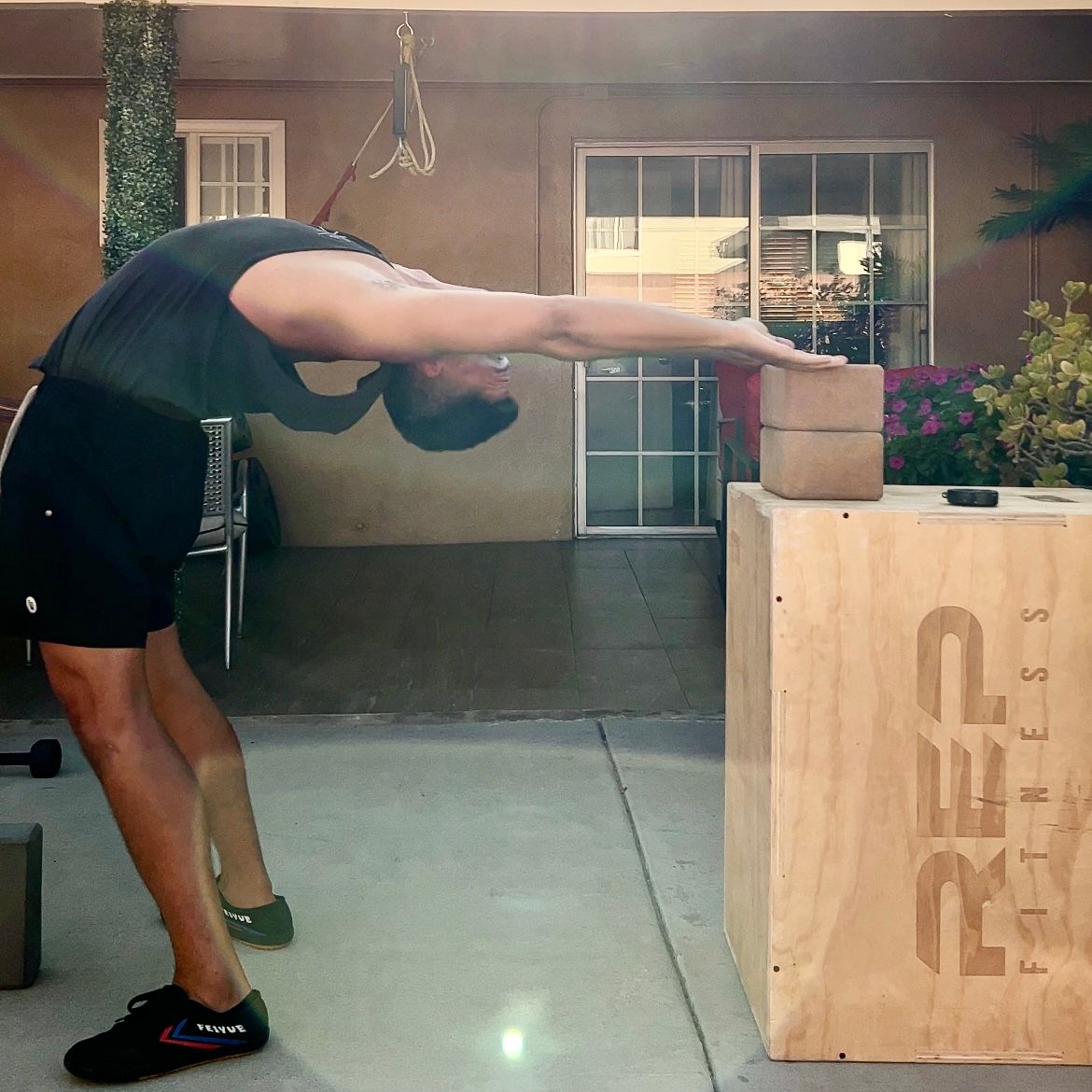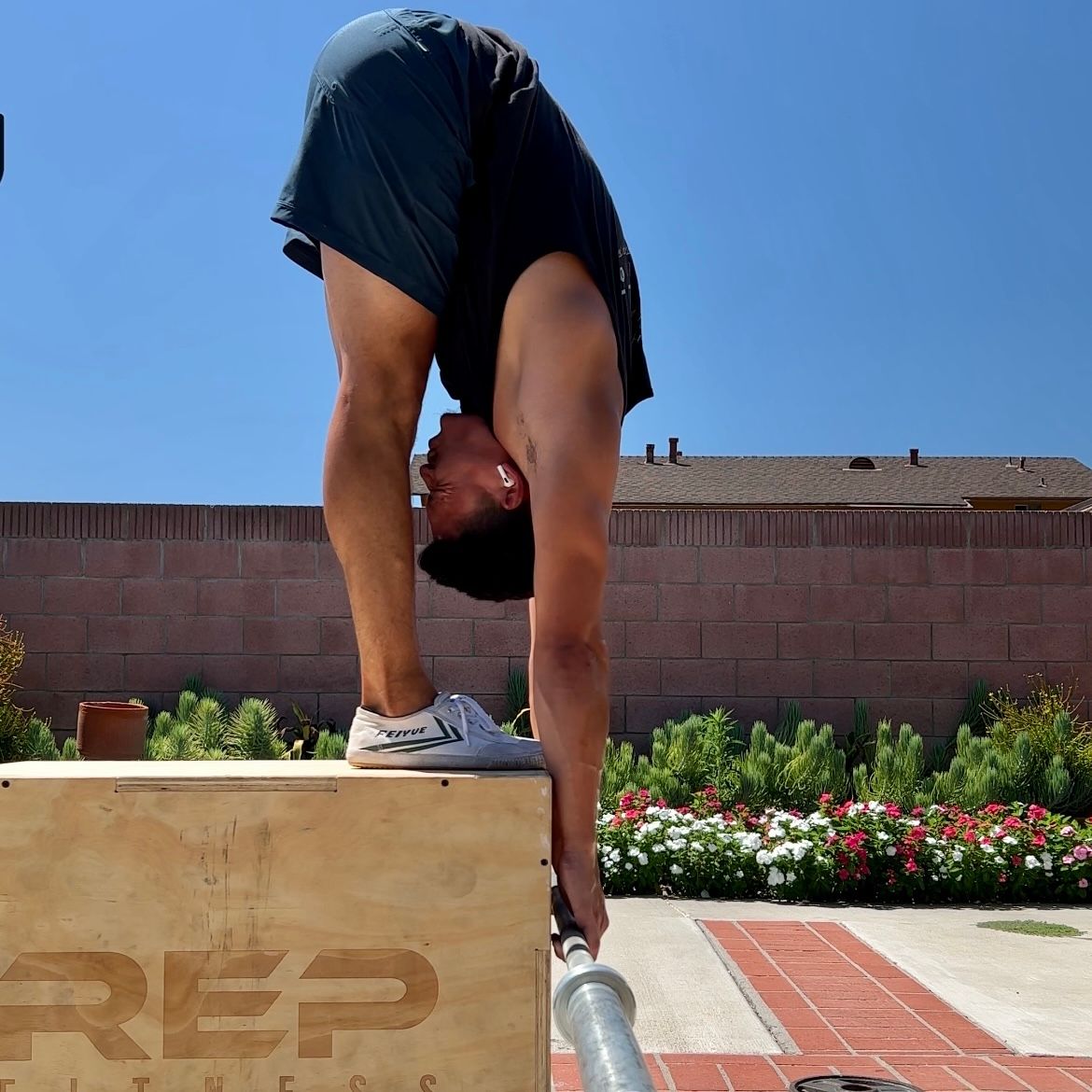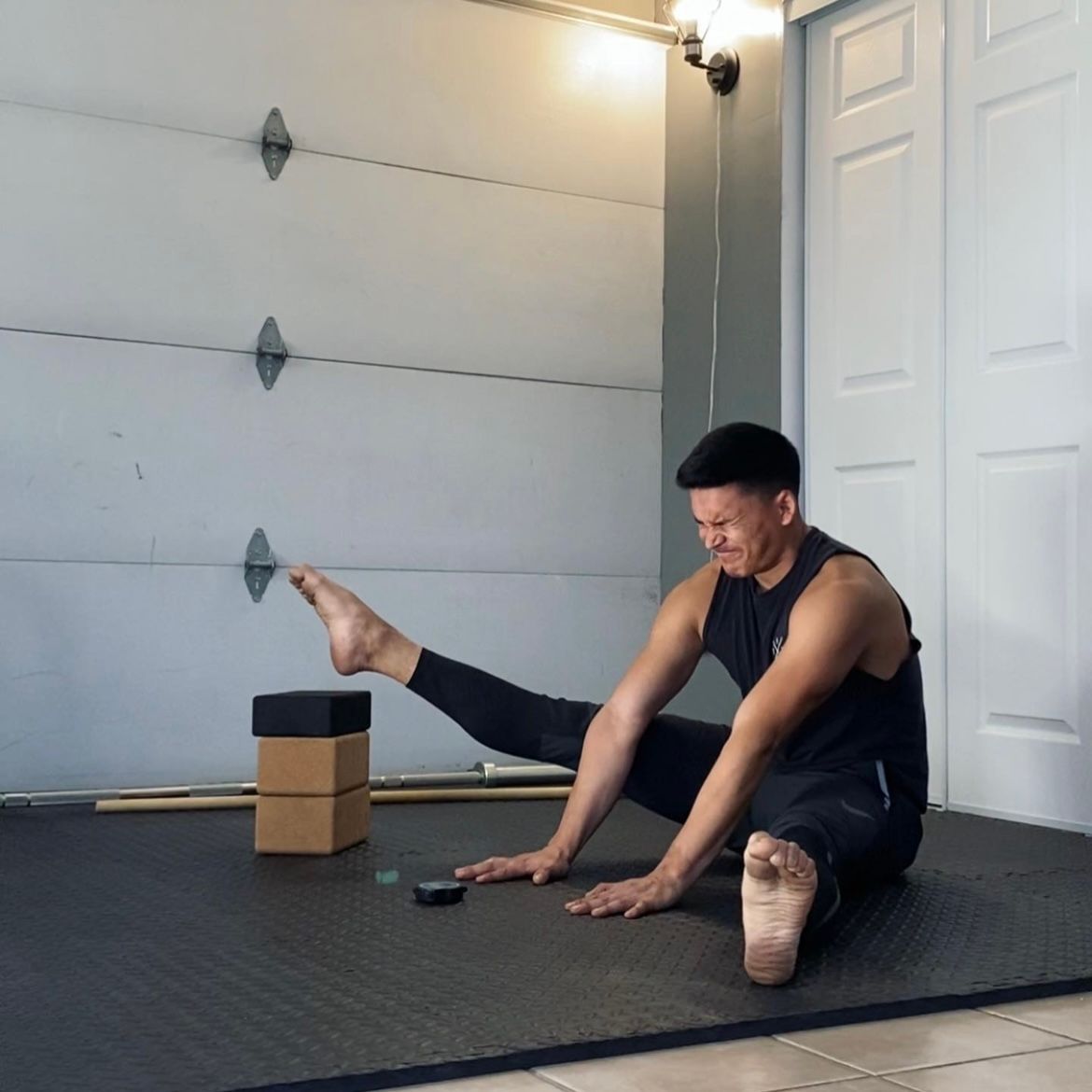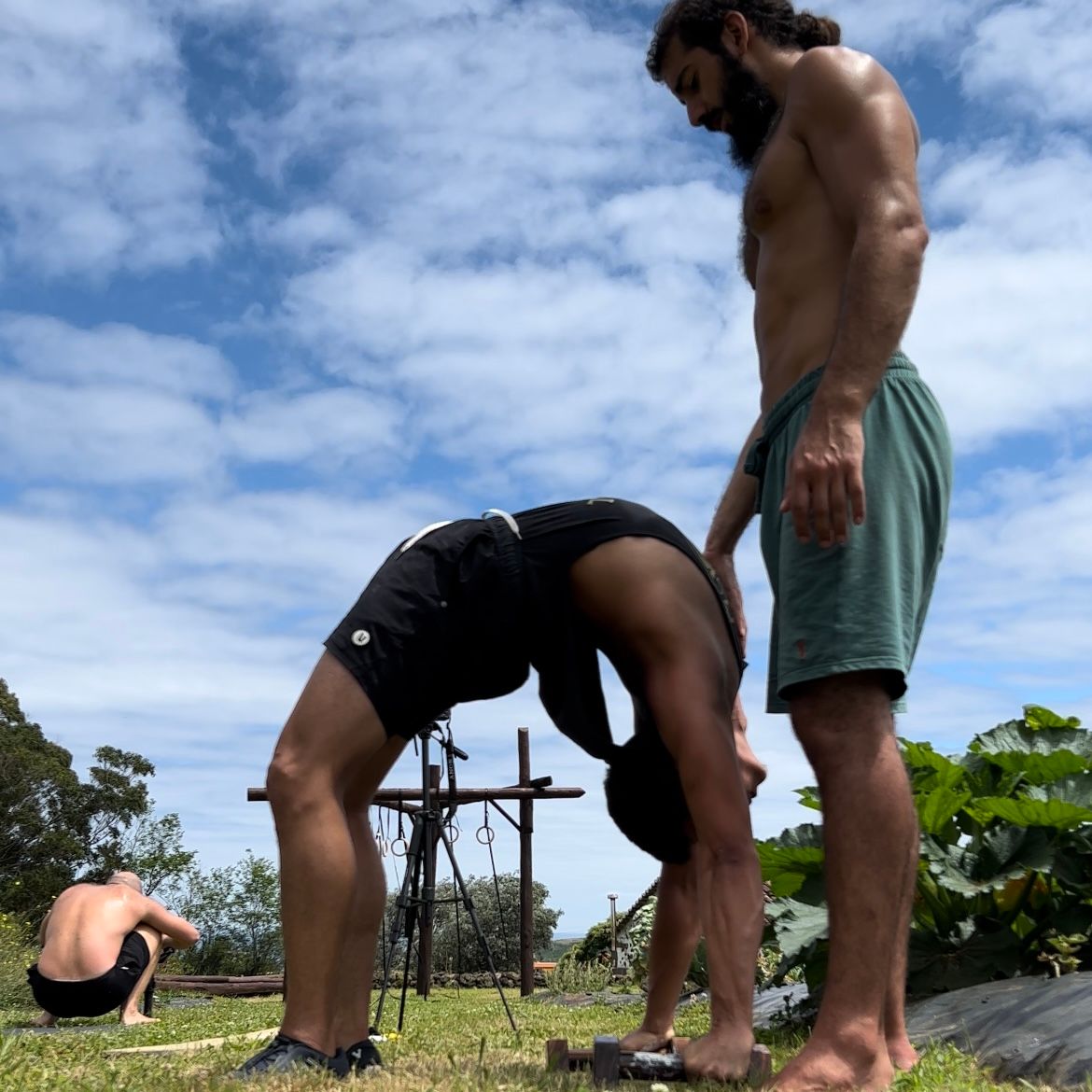Task Based Flexibility Training

This article covers what task based flexibility training is and how it can be applied to flexibility training to enhance range of motion development.
First things first, let's give credit where credit is due. I first learned about the use of tasking in flexibility training through Emmet Louis and his M3 system, Modern Methods of Mobility. And further learned how to implement tasking through my own training and through coaching my students.
What is Tasking and Why?
When it comes to flexibility training, the most common goal is increasing range of motion. And in the world of flexibility, there are several techniques that can be used to aid the development of range of motion. Of all the techniques out there, tasking is one of the most effective and one of my favorites. The concept is simple, a person stretching is given an external task in order to accomplish the goal of "getting deeper" in a stretch. Let's use a simple standing toe touch as an example. Instead of reaching towards our toes, we can setup yoga blocks on the floor at a height that we can just barelyyyy reach. Now, instead of reaching to an arbitrary point in the air, we can reach for the yoga blocks. "Why is this so effective?" you might ask!
Internal tasks/cues are often used by coaches as a way to encourage getting deeper in a stretch. Continuing on with our toe touch example, an internal cue would be something like "engage your hip flexors". While this is true and needed for reaching our max stretch, it's also much more confusing. Not everyone is familiar with hip flexors, where on the body they are located, and even less how to "engage" them. It's also not important for most people simply looking to improve their flexibility. A simpler solution would be to assign an external task like reaching towards a yoga block and letting the brain and body do its thing. Humans bodies are gifted at solving tasks! With enough effort in reaching, our brain and body would begin to engage the hip flexors all on its own as a way of solving the task. No need to focus on convoluted muscle groups. Just solve an external task. Another huge reason why tasking is effective is because each rep will be a quality rep near our end range of motion. When we're reaching for our toes without an external reference point, there's no guarantee that we're butting up to our end range on every repetition. Exposing our body to our end range is critical for ROM development.
How to Use Tasking for Increasing ROM
The steps are simple:
- Set up a target at your end range of motion.
- Aim to touch the target on each set and rep.
- Once you can touch the target on each set and rep, adjust the target position so that you can once again barley touch the target.
- Repeat the steps with new target height.
The pictures below are examples of how tasking can be used with backbends as well as frontbends.
In the first example i'm performing a dropback to bridge where my goal is to bend far enough backwards that I can lower down to a bridge with control. Since I don't have the flexibility to bend that far yet, I'm using an external object to help get me there. The blocks are positioned to where I can just barley touch them with my hands. Each training session I perform my programmed sets and reps, always aiming to touch the blocks. After some time training this way, my hands begin to press onto the blocks much harder. At this point, i'll lower the height of the blocks and repeat the process until I can dropback to bridge.

The next example shows how external objects aren't always required for tasking. Reference points can just as effective to solve an external task. In the picture below, i'm demonstrating the bottom portion of a Jefferson Curl. Instead of lowering down to yoga blocks as my task, I pick a point on my forearm as my external reference. And my task is to lower down and stretch to where my toes touch the reference point on my forearm or exceed it. If I exceed the reference point then I can quickly adjust it and keep on with the tasking. This is useful for situations where an external object isn't available.
These principles can be used across a variety of your favorite flexibility exercises. It just takes some creativity!

Tasking When Starting at End Range
In the examples above, I started the movement at a point outside of my end range of motion and lowered into my end range of motion. But what about when the movement we're working on begins at our end range? One example is seated hip compression work. It's common to perform seated compression work by placing our hands on the floor, leaning forward and then lifting our legs towards our torso. Then, as our ability to compress our hips improves, we begin to lean further forward to increase the difficulty. I've trained my own compression this very way and it'll definitely work. But why not task it?! We've already learned just how effective external cues are 😂.
In the picture below i'm demonstrating a seated straddle compression lift similar to what I mention above except now i'm using tasking as a way to challenge my compression even more. By placing blocks under my feet, i'm forced to start at a height where my compression strength is much more challenged due to starting closer to my end range. You can see this from how little over the blocks my foot is.
Give this a try next time you train any seated hip compression. I guarantee you'll notice the increase in difficulty. It's pretty gruesome! However, the increased time under tension near our end range will bring the compression gains we all desire!

Another example of tasking at end range is when training shoulder flexion. A common way to train this range is by holding a stick overhead in a prone position and lifting the stick from the floor. Since our hands start overhead, we're already at or near our end range of motion. Over time, the beginning portion of the lift will become easier. A simple way to make this more difficult is by placing an object like a yoga block underneath the stick. This would force us to once again start closer to our end range of motion. Feel free to reach out through the contact form if you'd like to see what this looks like.
How To Use Tasking with a Partner
Tasking can also be used very effectively with a partner.
In the picture below you can see Erdi demonstrating the technique on me a few weeks back during the learningtohuman retreat. Erdi places his hand on my chest and encourages me to apply a light pressure back onto his hand. As I apply more pressure onto his hand, I’m effectively getting deeper into the stretch. In this case, the bridge.
We then ease into the range for a few seconds before going for a second round.
To start the second round, Erdi moves his hand slightly away from my chest but still keeping contact. This again will encourage me to get even deeper into the stretch. This was definitely one of my deepest bridges to date!

At some point in the partner tasking, we'll reach our end range of motion. And no matter how much our partner moves their hand away, we won't be getting any deeper. This is what we're after. When we reach this point, our partner should maintain their hands at that exact place and the set, as well as any consecutive sets, can be completed at this range of motion. The more time we can spend at our very end range of motion, the larger the improvements to our flexibility.
These same instructions can be used across many partner stretches. A simple example would be a seated toe touch. A partner could position themselves in front of the stretchers feet so that the stretcher reaches for their hands as the task. On each rep, the partner could move their hands ever so slightly back until there's no more room for getting deeper.
Bottom Line
Overall, tasking is one of my favorite techniques for improving range of motion. It's used to facilitate getting deeper in a stretch by assigning an external task to our body. With a bit of creativity, it can be used in any position that we may be training. It can also be used effectively if the position starts at or near our end range of motion. This can be easily seen when training seated hip compression or overhead shoulder flexion in prone positions. The technique can also be used effectively with a partner.
I encourage you to explore these concepts within your own training and get wild with it! Go tasking crazy. Feel free to share how you've implemented tasking in your own training by tagging me in your IG posts/stories or even through a private DM if you'd prefer :)
If you enjoyed this article, I encourage you to subscribe to my weekly newsletter, The Sunday Spread, where I share free resources, training tips, discounts on my coaching services, as well as my personal interests like podcasts, books, and worthwhile videos. You can sign up by hitting the gray button in the bottom right-hand corner and dropping your email or signing up on the homepage!






